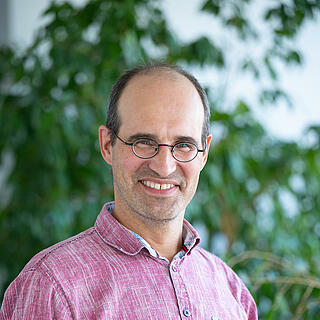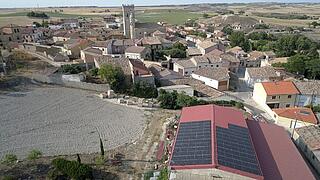Reducing the use of wood for energy & improving the sink performance

© fstopimages/Malte Müller
The most recent German national forest inventory – an evaluation of forest stocks in Germany that takes place every ten years – showed that forests have become a source of CO2. Do its forests still contribute to climate protection, then, or is there a need for action? In our latest podcast episode, Dr Klaus Hennenberg, one of our experts on forests, offers an assessment of wood use, the state of the forest and its future role.
Listen to Oeko-Institut's podcast episode 'How do we use wood sustainably?' here.
The podcast audio is in German; an English translation is here.
Keeping CO2 in the wood: the carbon storage capacity of forests and wood products
Wood is used for numerous purposes – in furniture production, paper manufacturing and for heating, i.e. for energy purposes. Wood is a popular raw material because it grows back and is considered sustainable. And wood stores CO2. The carbon storage of forests and wood products as part of the land use sector (LULUCF) is an essential component on the path to greenhouse gas neutrality in 2045 as it is part of firm plans to counterbalance carbon emissions from the agricultural and industrial sectors. However, beetle infestation and periods of drought have recently led to a huge decline in spruce stocks and reversed the carbon storage capacity of the forests. The carbon storage capacity of mixed deciduous forests has not been able to compensate for the loss.
Promotion of using wood for energy purposes hinders achievement of climate targets
The material use of wood for products such as wooden beams or fiberboard creates more added value and has a significantly better greenhouse gas (GHG) balance than firewood, as carbon remains stored in the wood. If wood from stable mixed deciduous forests is not harvested and more carbon is stored in the forest, the GHG balance is slightly better than that of firewood, for example. The existing support mechanisms in the German Renewable Energy Sources Act (EEG) and the Building Energy Act (GEG) – which benefit heating systems – unintentionally make it more difficult to achieve climate targets in the LULUCF sector. Furthermore, the other ecosystem services provided by forests, including water retention, protection of biodiversity, cooling effects and local recreation, are not sufficiently taken into account.
Germany needs a national biomass strategy
However, a national biomass strategy (NABIS) agreed in the coalition agreement of Germany’s so-called traffic-light coalition government did not materialise in 2024.
Knowledge instead of everyday advice
Oeko-Institut’s podcast ‘All change please!’ is aimed at listeners from politics, research, the media, NGOs and the general public – anyone with an interest in political and environmental issues. It is hosted by Mandy Schossig, Head of Public Affairs & Communications, and Hannah Oldenburg, Digital Communications & Social Media Officer at Oeko-Institut. For about an hour – enough time for the ‘long haul of environmental podcasts’ - they talk to an expert from Oeko-Institut about the upcoming changes towards sustainability. The special episodes also address current political and social issues.
All change please!’ podcast: episodes of the 5th season
Episode 3: 'How do we use wood sustainably?' with Dr Klaus Hennenberg, published on 7th May 2025
Episode 1: 'What's next for climate policy?' with Anke Herold, published on 13 January 2025
All seasons and episodes of the podcast can be found at oeko.de/podcast.
The podcast is available on all common podcast platforms such as Apple Podcasts and Spotify.





